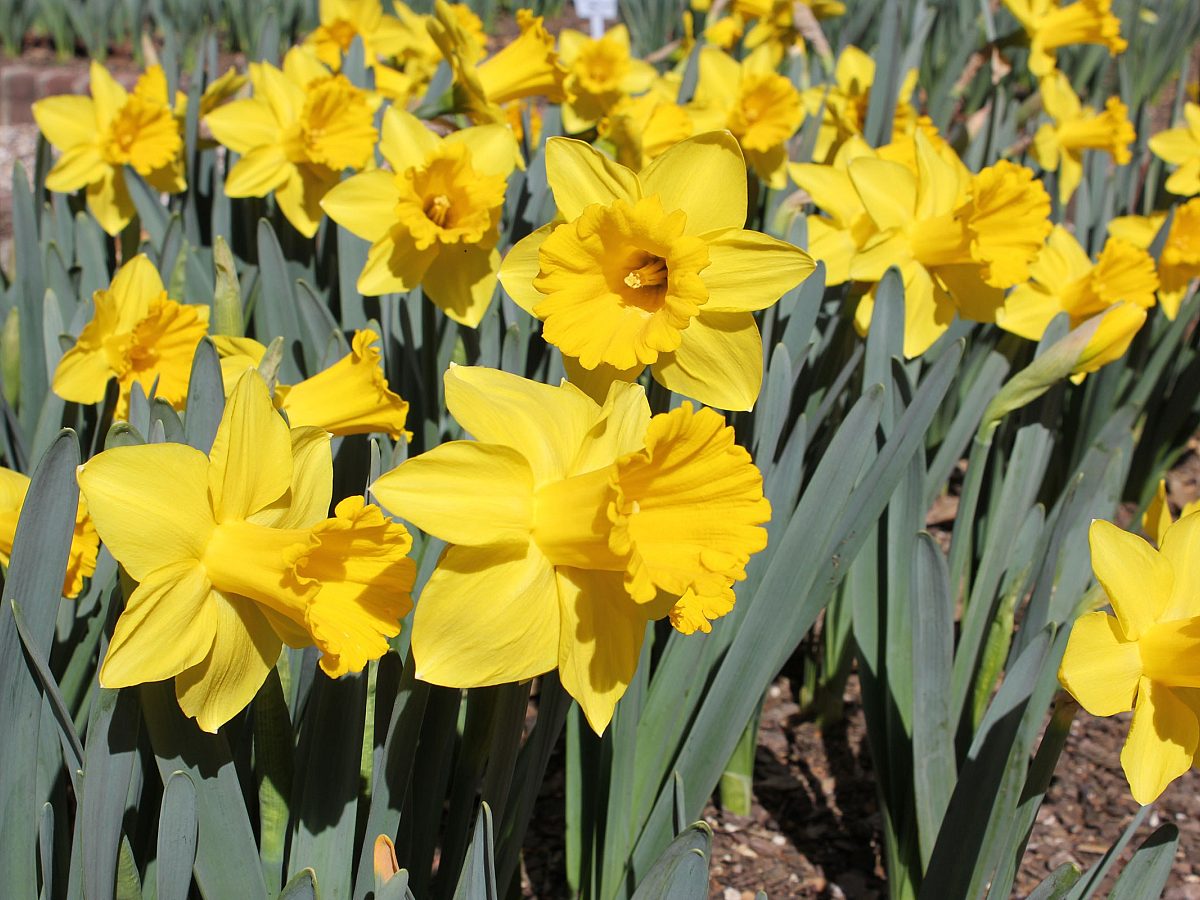
The Leaf, Winter 2023
The Dixon’s magnificent tulip displays each spring would be a real commitment for the home gardener since tulip bulbs are not well suited to the Mid-South and need to be replanted each year.
In contrast, daffodil bulbs can be long-lived, low-care performers. They are often seen in fields and in areas that were once homesteads. The home could be gone, but the flowers magically come back each spring. This makes daffodils a real value for most gardeners.
There is a plot of land in Cordova that was a winery in the 1980s; long before that, it was a cut flower farm. Thousands of daffodil bulbs were planted there over a half-century ago. Many of them still bloom there today. A Dixon friend in the flower bulb business identified many bulbs that are now considered heirloom varieties, many of which are no longer in production when he visited the site one spring.
November is the best month to plant daffodil bulbs in the Mid-South. A sunny location in soils that are free draining is ideal. The bulbs should be planted 2.5 times the height of the bulb deep. An auger, made for this purpose, fitted on a power drill can plant holes. A corded drill is recommended.
A T-handle bulb planter, soil knife, or trowel can be used for manual planting. The best way, although labor intensive, is to excavate the entire bed to the planting depth, layout and space the bulbs, and cover them with the loose soil. Most serious daffodil growers prefer this method.
A low-nitrogen fertilizer, like bone meal, is a good organic product, but the neighborhood dogs may find it attractive. There are gardeners’ horror stories of Fido’s undoing a day’s worth of planting, wreaking havoc on a garden in search of the bone scent.
There are thousands of daffodils, classified into 14 divisions, with a multitude of sizes, flower shapes, and colors. Some varieties have pink, red, or green, along with the usual yellows, whites and oranges typically associated with daffodils. With so many varieties whose bloom times range from early February to early April, gardeners can plan their beds so that color is available for two months throughout the early spring.
Daffodils are naturally deer and pest resistant. They make wonderful companions with other bulbs, perennials, annuals, and flowering shrubs. Particularly effective when planted in drifts, these flowers are a welcome sign of spring. Their only downside is that for the best repeat flowering, the foliage must be allowed to linger for at least six weeks after the flowers have faded to build up energy for the next year’s show. Mowing them down prematurely or braiding the foliage will result in smaller blooms and eventually bulbs without enough reserves to generate flowers at all. One remedy is to plant the smaller varieties with Liriope (monkey grass), which will hide the tattered foliage.
The early varieties typically bloom as early as February. At the Dixon, the first to bloom is in January, ‘Rijnveld’s Early Sensation’, which has a large yellow trumpet. The mid and later-season varieties will continue to provide blooms into late March, or early April.
Other early flowering ones, including ‘Tete-a-Tete’, ‘February Gold’, ‘Tiny Bubbles’, and ‘Jetfire’, may be particularly well-suited to being planted under trees because their foliage can capture sunlight and store energy before the trees’ leaves emerge.
The Dixon and the Mid-South Daffodil Society will host the annual Mid-South Daffodil Show March 18-19, 2023 in the Winegardner Auditorium.
To learn more about daffodils, an excellent source is the American Daffodil Society at www.daffodilusa.org.